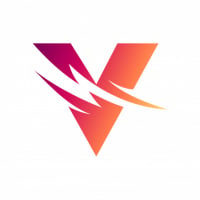Forum Migration Notice
We're transitioning to a more modern community platform by the end of this year. Learn about the upcoming changes and what to expect.
TCP&Z and TCP&Z,X?

Vicente
✭
in RobotStudio
Hi, I'm trying to define the tool for my robot. While I understand the concept of the points to define the TCP of my tool using TCPDefault mode, I don't get what points to do for the called "elongated points" for the TCP&Z and TCP&Z,X methods. What do they mean? How and where do I move my robot to define orientation correctly?
The manual could use an example image for this, because the text is not very clear, at least for me.
The manual could use an example image for this, because the text is not very clear, at least for me.
0
Comments
-
Hello,As mentioned, you have to elongate your tip.
 In this image you have CDO on trihedron, X is on right and Z on elongate.So first make the first three points with different orientations, 4th aligned, Z with elongate and X with right tip.☑️2024 - RobotStudio® User Group0
In this image you have CDO on trihedron, X is on right and Z on elongate.So first make the first three points with different orientations, 4th aligned, Z with elongate and X with right tip.☑️2024 - RobotStudio® User Group0 -
Thanks DenisFR, I've managed to define the orientation for the Z axis correctly
 , but I don't really get the X axis yet. Using your image as an example, after doing the fifth point to do the oriantation of Z, what would you do? Move the robot so that the right tip is above the reference point? 0
, but I don't really get the X axis yet. Using your image as an example, after doing the fifth point to do the oriantation of Z, what would you do? Move the robot so that the right tip is above the reference point? 0 -
Yes you move right tip to fixed one.
☑️2024 - RobotStudio® User Group0 -
No disrespect to you Denis, but you really don't have to move X in that direction, you move in the direction that you want X to be for your use. Also, it is good to have your orientation parallel with world X or Y so that you jog in world to set X and it will not be skewed. Finally, do not reorient after teaching point 4 when you teach the Z and X elongator.Lee Justice0
-
Thanks all for your help, I've managed to orient the tool as I wanted. In the end, I did precisely what the manual says. First, set the 4th point of the tool in a way that you can move linearly for the definition of the elongated points, so you won't change the orientation. Then, for whatever axis you are doing first, Z or X, move linearly away from the ref point and define a point at whatever distance. The robot will take going back to the ref point as the positive direction of your tool axis. Now, for the last axis, Z or X, you have to go back to the ref point and then move away linearly again (now in another axis or you will define both of your axis as the same one) and define a point at whatever distance. This way the robot will take going back to the ref point as the positive direction of your other tool axis.0
-
@lemster68 : I talk in case you have a tool with a tip in X direction. Like on my image. With that sort of tool, you don't need to orient parallel to word. Which is not very accurate...
☑️2024 - RobotStudio® User Group0
Categories
- All Categories
- 5.7K RobotStudio
- 401 UpFeed
- 21 Tutorials
- 16 RobotApps
- 306 PowerPacs
- 407 RobotStudio S4
- 1.8K Developer Tools
- 251 ScreenMaker
- 2.9K Robot Controller
- 366 IRC5
- 90 OmniCore
- 8 RCS (Realistic Controller Simulation)
- 857 RAPID Programming
- 43 AppStudio
- 4 RobotStudio AR Viewer
- 19 Wizard Easy Programming
- 111 Collaborative Robots
- 5 Job listings

